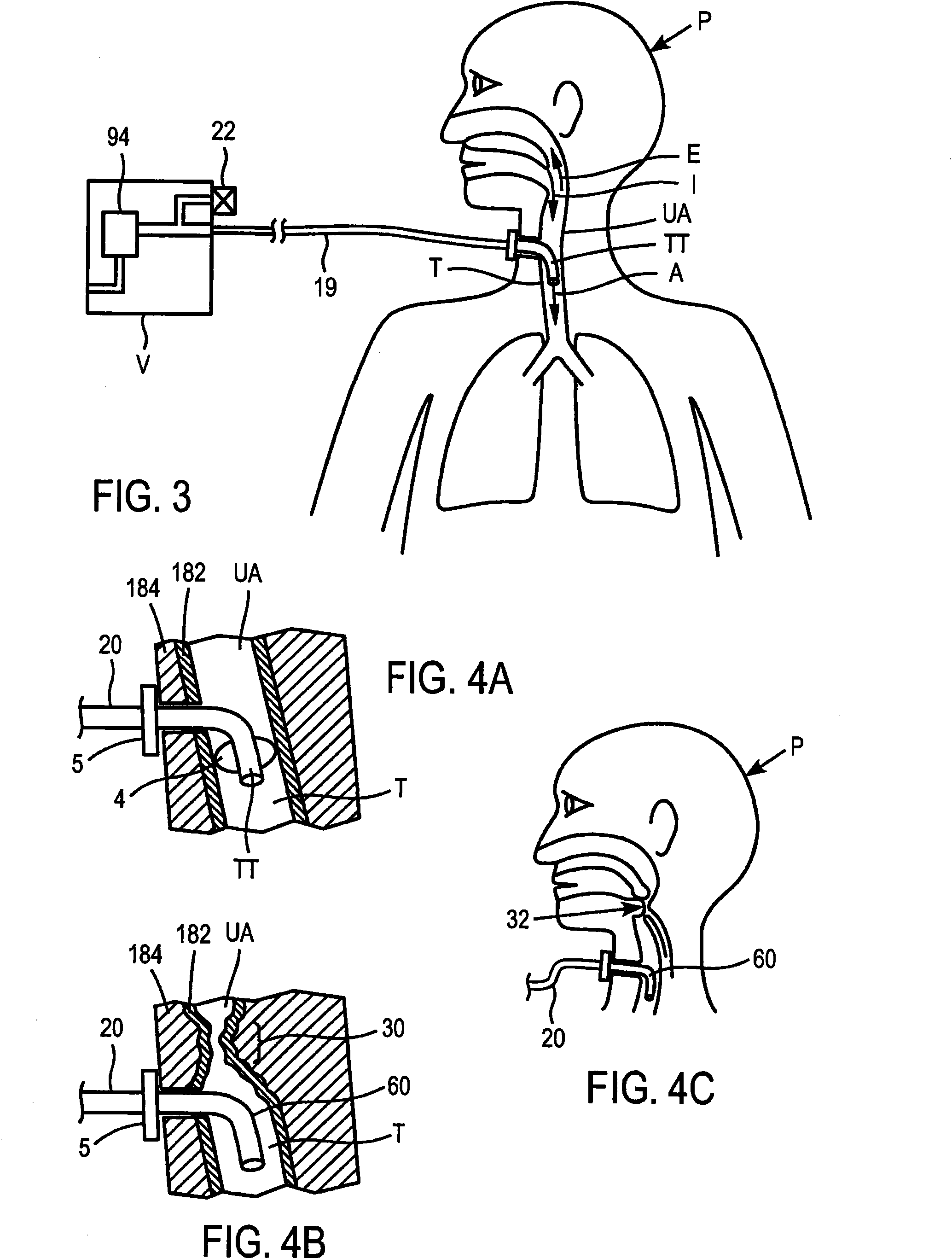Methods and devices for providing inspiratory and expiratory flow relief during ventilation therapy
A release device and ventilation equipment technology, applied in the direction of respirators, drug devices, other medical devices, etc., can solve the problems of patients who cannot breathe spontaneously and are not enough to maintain breathing
- Summary
- Abstract
- Description
- Claims
- Application Information
AI Technical Summary
Problems solved by technology
Method used
Image
Examples
Embodiment Construction
[0204] Figure 1 shows a prior art conventional ventilation system, commonly referred to as a continuous mechanical ventilation (CMV) system, in which a ventilator (V) is connected to a patient (P) using a dual-branch breathing circuit (2) The limb (IL) delivers gas to the patient, and gas is exhausted from the lungs through the exhalation valve (22) back to the expiratory limb (EL). A typical patient ventilation interface is an endotracheal tube (ETT) with a tracheal tube cuff (4) so that the patient's lungs are closed from the outside air and only connected to the air source through the ventilator breathing circuit. Ventilators in CMV systems typically include one or more ambient relief valves to prevent lung overpressure in the event of an obstruction or high pressure event, and to enable access to outside air in the event of ventilator failure. The ventilator may include an inspiratory relief valve (8) so that the patient, if he has any breathing maneuver capability, can ...
PUM
 Login to View More
Login to View More Abstract
Description
Claims
Application Information
 Login to View More
Login to View More - R&D
- Intellectual Property
- Life Sciences
- Materials
- Tech Scout
- Unparalleled Data Quality
- Higher Quality Content
- 60% Fewer Hallucinations
Browse by: Latest US Patents, China's latest patents, Technical Efficacy Thesaurus, Application Domain, Technology Topic, Popular Technical Reports.
© 2025 PatSnap. All rights reserved.Legal|Privacy policy|Modern Slavery Act Transparency Statement|Sitemap|About US| Contact US: help@patsnap.com



